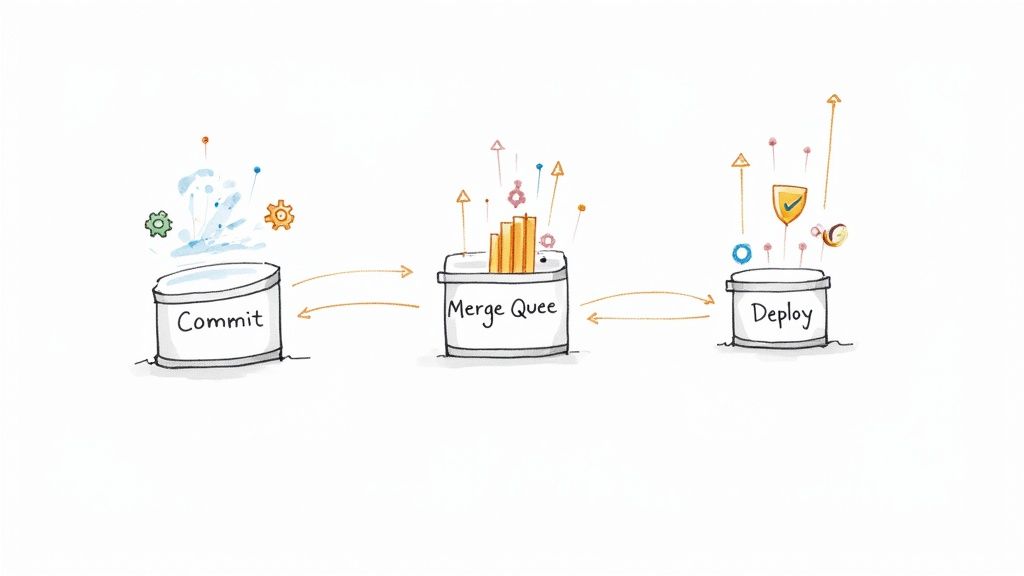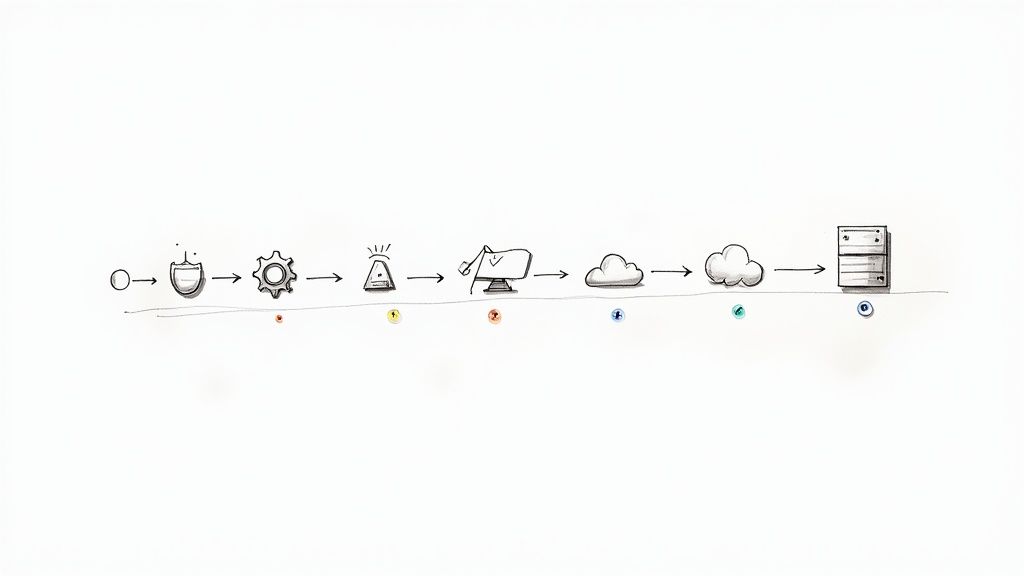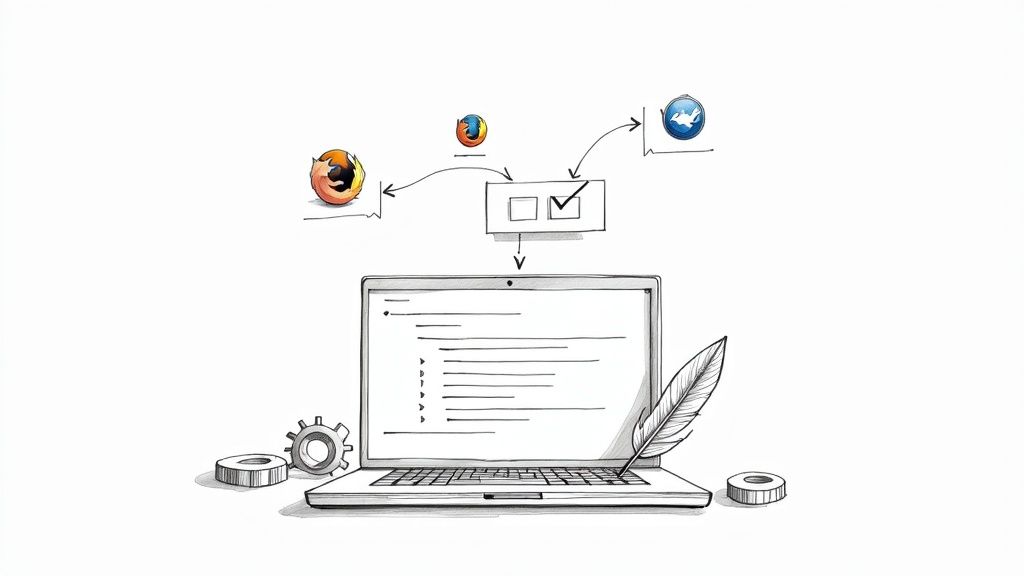From Developer's Journey to DevEx
DevEx can improve a developer's DevOps journey, making it easier for them to work and collaborate. Learn what DevEx is and how it can help your company!

For any organization with developers, it's imperative to facilitate developers with support and tools that improve productivity. That's where developer experience (DevEx) comes in. The better the developer experience, the better their DevOps journey will be.
It may sound like another buzzword, but DevEx is critical for today's tech companies. With rapidly changing technology trends, organizations must ensure that they foster developer agility and create proper mechanisms for communication.
Tech companies that consistently work to improve DevEx may face fewer hurdles in project development and also improve developer productivity and efficiency.
Whether your organization’s developers have a more development-centric role or you've adopted the DevOps model (combining software development with operations for increased agility), good DevEx can make a big difference.
The Developer's Journey
Before going in-depth into DevEx, it's best to understand the developer's DevOps journey because DevEx should impact every stage. Every developer goes through the following journey in any organization that they join:
- Onboarding: The first stage in the developer's journey, whether in a new organization or for a new project, is onboarding. This is where the developer is introduced to all the requirements, protocols, tools, documentation, etc.
- Understanding requirements: The second stage for the developer is to gather and understand the project's needs.
- Design: The developer works on the project's design based on the requirements. This stage involves collaboration with other team members, such as user experience (UX) designers, business value developers, product developers, etc.
- Build: This is the stage where most of the coding happens. If the requirements or design are unclear, this stage can take longer.
- Testing: The developer tests the code in their local environment at this stage, ensuring it runs and produces the desired results.
- Deployment: At this stage, developers deploy the project on-site and test it in the actual environment.
- Maintain/Monitor: At this stage, the developer is responsible for maintaining the finished product (for example, removing bugs or adding new features). They’re also responsible for monitoring the product's performance, making any adjustments for improvements.

What is DevEx?
DevEx or Developer Experience refers to the overall experience of a developer in software development. In simpler words, it describes how developers perceive the infrastructure and how they feel about their work.
DevEx includes all the stages in a developer's journey. DevEx best practices ensure that developers are heard and understood.
A good DevEx means it's easy and straightforward for developers to work on a project, meet deadlines, and communicate concerns. On the other hand, a bad DevEx may mean the developer is overworked, underappreciated, and unheard.
Modern tech organizations are hiring people whose job is to ensure a high DevEx standard. As organizations grow, take on more projects, and hire more developers, it's easier for their experience to get poor. So having an individual or team dedicated to improving DevEx helps a lot.

How to Improve DevEx?
Proper documentation or a one-off developer meeting won't create a good DevEx. It requires continuous improvement, so companies must constantly improve DevEx. Here are some of the ways you can improve DevEx:
- Get feedback: Identify and understand developers' pain points through weekly or monthly feedback. Use surveys or face-to-face meetings to discuss their work and how their experience can be improved.
- Improve documentation: The more transparent the requirements, the easier for developers to design and build. This will also help reduce disruptions and wait times for them.
- Empower with automation: Tools can help automate trivial and mundane DevOps tasks for developers. Increase their productivity by adopting automation tools for better workflows, for example, tools for collaboration, testing code, or merging pull requests on Git.
- Make deployment fast: Continuous deployment is linked with better DevEx. In other words, developers are happier if their efforts go into action quickly. With practices like small batch releases and automated testing, deployment can be accelerated.
Case Study
ClarityAI, a sustainability tech platform, formed a DevEx team to facilitate developers and create a better working environment for them.

Here's what happened a year after the formation of the DevEx team:
- Critical processes like code release improved considerably.
- Metrics show that continuous integration (CI) pipelines saw a reduction in wait times.
- Development shifted its focus to user research, striving for improved customer satisfaction with the product.
- Workplace culture improved with members from other teams developing more empathy toward developers after shadowing sessions.
- Communication with users increased, which, in turn, resulted in better problem-solving.
Case studies like the one above show that DevEx can positively impact developers, the entire organization, and even its consumers.
Future of DevEx
DevEx will likely become necessary for tech companies, especially with the talent shortage. Ensuring a positive DevEx will help companies retain developer talent. On the other hand, those that provide a poor experience for developers may have difficulty increasing their productivity or even keeping them on the payroll.
More tools will emerge that specifically improve DevEx, such as developer portals, for seamless communication and feedback. Adopting such tools will help DevEx teams be more in sync with developers.
Artificial Intelligence (AI) is changing how developers work with bots to produce and check code. While they may not replace developers, these tools can be used to improve DevEx and empower them.
Conclusion
DevEx is an important component of digital transformation as it impacts business processes, workplace culture, and customer experience. If developers find it easier to build and deploy projects, it indicates that your team's DevEx is good.
Using the right tools is important for improving their DevOps journey. Mergify is one such tool that can considerably improve DevEx by automating code merging and creating queues for pull requests.
The Orca Security and Back Market case studies show how Mergify can address pull request issues as companies scale and add more developers. Read these case studies to learn how Mergify helped these fast-growing companies improve the experience for their developers.
Improve DevEx with the help of Mergify. Sign up for a free plan today!





